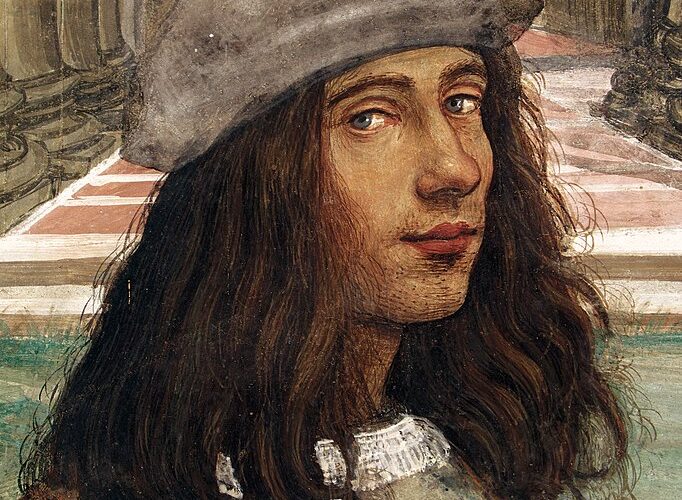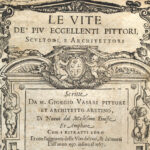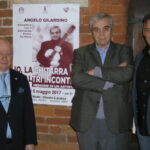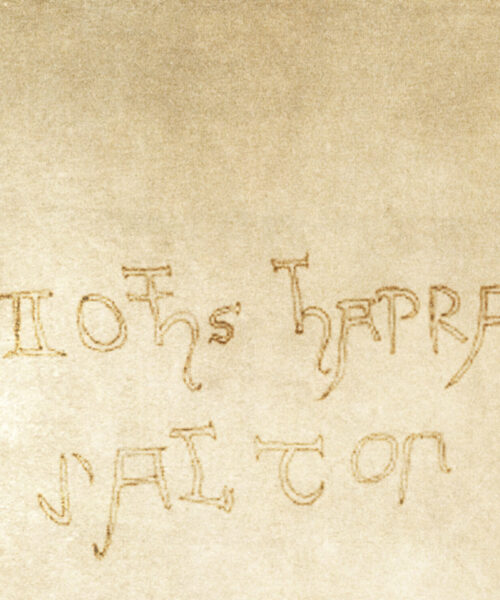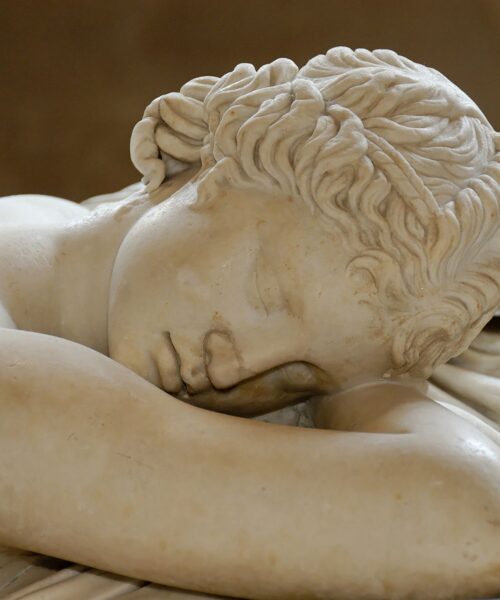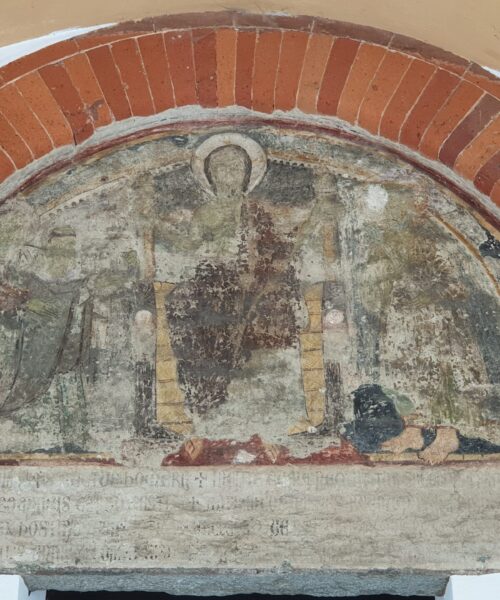In the realm of Renaissance art, few figures have been as shrouded in mystery and controversy as Giovanni Antonio Bazzi, known as Il Sodoma. His life and works fluctuate between being hailed as a genius and being overshadowed by dark rumors that have marked his reputation.
Vasari and Il Sodoma
In Giorgio Vasari’s “Lives of the Most Excellent Painters, Sculptors, and Architects,” Il Sodoma is portrayed as an eccentric and flamboyant character. Although Vasari acknowledges the painter’s talent, he often criticizes him for his lack of discipline and seriousness, portraying him as an artist who squandered his potential. Vasari recounts peculiar anecdotes, such as Bazzi’s fondness for keeping exotic animals, including a baboon, in his home-studio.
Vasari’s reflections on the fate and fortune of artists subtly criticize the career and conduct of Giovanni Antonio Bazzi, known as Il Sodoma. According to Vasari, luck alone cannot guarantee success and wealth; it must be paired with a solid work ethic and relentless dedication to one’s art. The central idea that emerges is that good fortune, if not properly utilized, can turn out to be a curse in disguise.
When Bazzi arrived in Siena, brought there by the Spannocchi merchants, fortune seemed to smile upon him. With little competition for a while, Bazzi had the unique opportunity to work almost exclusively in the city. Although this guaranteed him some initial success, Vasari suggests that it negatively affected his artistic growth. Since he did not feel driven by competition, Bazzi did not seek to further improve his skills, often working “for practice” rather than for passion.
Vasari also criticizes Bazzi for not studying enough, limiting himself to drawing works of Iacopo dalla Fonte, which were highly regarded at the time. Although Bazzi made many friends in Siena thanks to his portraits and the natural inclination of the Sienese towards foreigners, Vasari suggests that his popularity stemmed more from his affable personality than his true artistic talent.
Vasari’s judgment of Bazzi is clear: an artist who, despite having luck on his side, failed to fully exploit his opportunities, ultimately wasting his potential and living in a “crude and bestial” manner, leading to a destitute old age.
From Vasari’s description of Sodoma’s eccentricities, other issues emerge that have sparked curiosity and debate through the centuries, particularly regarding his personal and sexual identity.
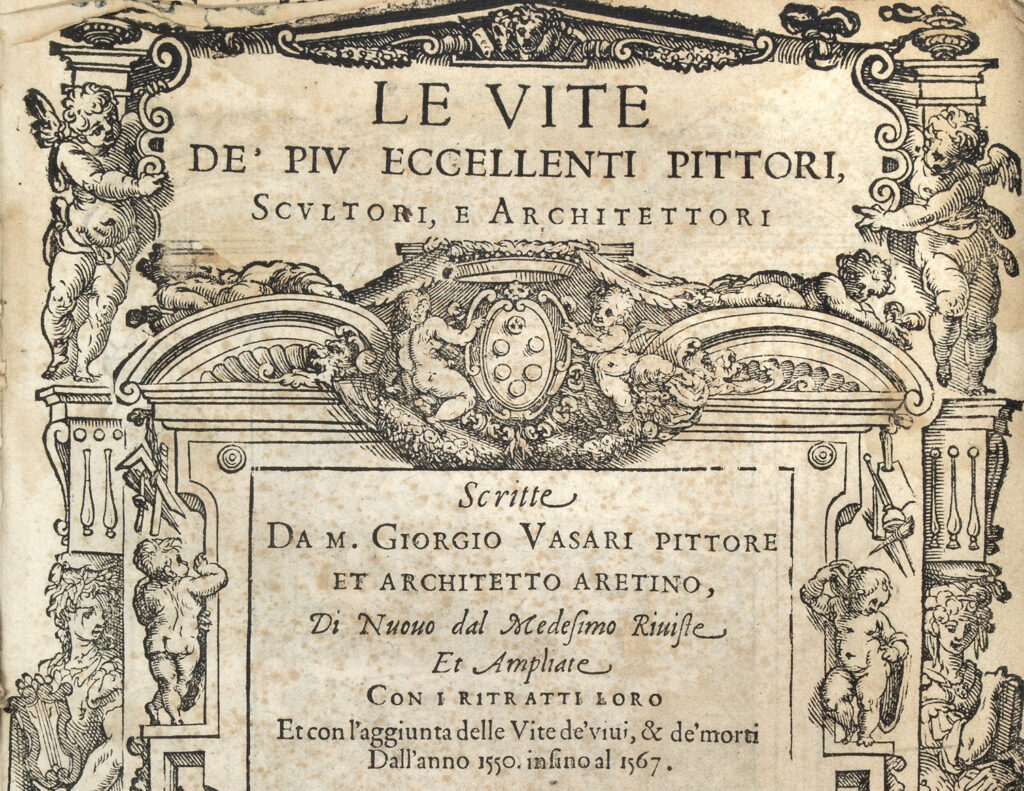
Homosexuality and Il Sodoma
The sexuality of Giovanni Antonio Bazzi, better known as Il Sodoma, has sparked curiosity and debate. The name “Sodoma,” evoking direct biblical connotations associated with sin and homosexuality, has led to much speculation about his sexual orientation.
However, the origins and reasons behind Bazzi’s adoption of this nickname remain uncertain. There is no tangible evidence or historical documents to confirm or deny the rumors about his homosexuality. His reputation as an eccentric individual might have led to the creation of such gossip, or the nickname might simply be a reflection of his unconventional character. As with many historical figures, discerning between reality and myth can be complex.
Although Vasari does not provide direct references to Bazzi’s homosexuality in his “Lives of the Most Excellent Painters, Sculptors, and Architects,” details about his peculiarities and behaviors do emerge, fueling further gossip. Vasari, known for his often gossipy tone about artists, refers to Sodoma’s preference for “boys and beardless youths,” suggesting an affinity for the company of young males, which could be interpreted as a veiled allusion to his homosexuality. Moreover, Vasari states that the nickname “Sodoma” was linked to the artist’s fondness for these young men, and that Bazzi not only accepted the name but gloried in it, composing and singing poems about it.
As time has progressed, the perception of Bazzi has changed and evolved. While some modern historians might be tempted to interpret Bazzi through a contemporary lens, it is essential to remember the importance of understanding historical figures within the context of their time, avoiding misleading or anachronistic interpretations.
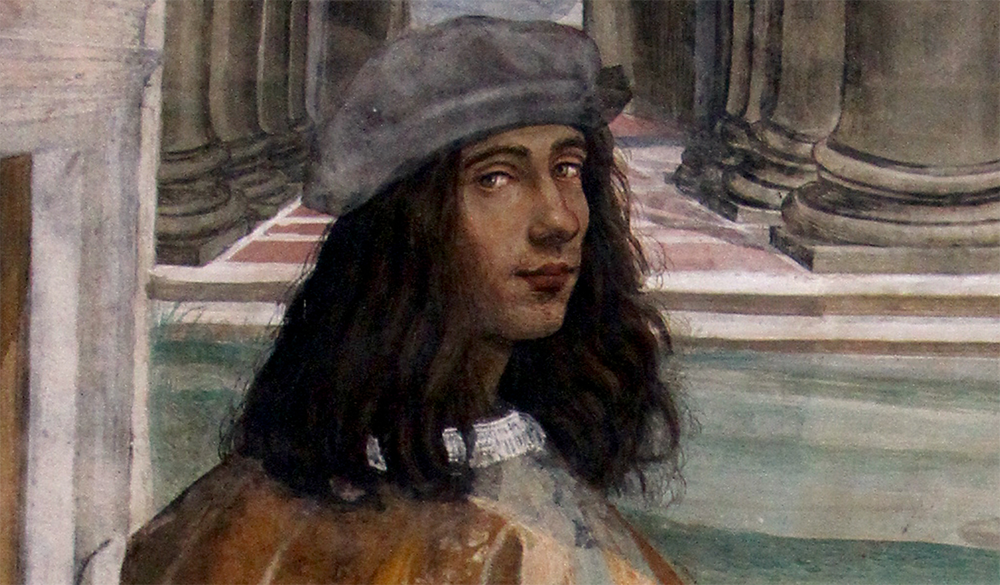
The Connection with Raphael
It’s undeniable that Bazzi was recognized as a talent in his time. His association with Raphael, one of the giants of the Renaissance, is proof of this. Within Raphael’s fresco “The School of Athens,” located in the Vatican Rooms, there are many figures that have been the subject of speculation in terms of identification. It is widely accepted that Raphael included himself as one of the young men on the right side of the fresco. Next to him, there is a figure traditionally identified as Il Sodoma.
This interpretation, largely based on the accounts of Giorgio Vasari, suggests that Raphael held Il Sodoma in high regard, to the point of including him in his masterpiece among the great minds of history. The presence of Il Sodoma in the fresco might also symbolize a sort of artistic “passing of the torch,” since Il Sodoma had previously worked in the Vatican Rooms before Raphael.
This detail, along with others in the fresco, demonstrates how Raphael was embedded in the artistic context of his time and how willing he was to recognize and honor the talents of others, even if they were his contemporaries.
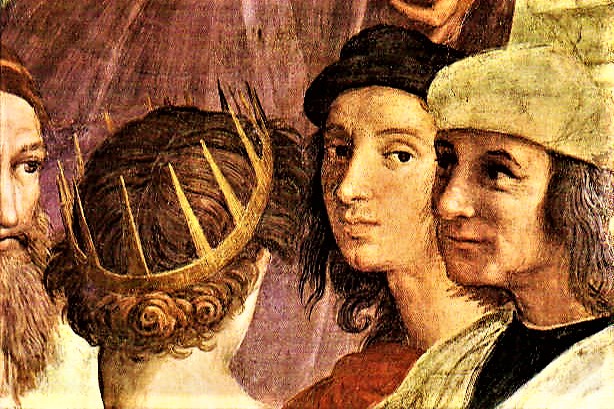
Eccentricities of Il Sodoma
Beyond his undeniable artistic talent, Bazzi was known for his eccentricities, which contributed to creating a shroud of mystery around him.
Exotic Animals as Companions: Vasari narrates how Il Sodoma used to keep exotic animals, particularly a baboon, in his home-studio. This bizarre choice of companionship was uncommon at the time and led many to consider him an eccentric.
Theatrical Behavior: Bazzi had a natural inclination for theatrics. It’s told that he often staged small performances or jokes, both for his own amusement and to entertain his guests and clients.
Unconventional Lifestyle: Contrary to many of his contemporaries, Il Sodoma did not follow a typical Renaissance artist’s lifestyle. Vasari describes him as someone who lived in a “crude and bestial” manner, suggesting an individual who did not conform to the social norms of the time.
Love for Poetry and Song: Though primarily a painter, Bazzi had a love for poetry and song. He is said to have often composed verses, some of which concerned his nickname, “Il Sodoma”, and sang with great enthusiasm.
These peculiarities, coupled with his undeniable artistic talent, made Bazzi a unique figure in the Renaissance landscape. Although some of his eccentricities may have been exaggerated or even fabricated, they contribute to creating a fascinating and complex image of an artist who did not conform to the standards of his time.
Conclusion
The figure of Giovanni Antonio Bazzi, or Il Sodoma, emerges as a complex mosaic of talent, eccentricity, and mystery. While his works speak for themselves, the stories and legends surrounding his life remind us of how multifaceted and elusive the nature of art and artists can be. It’s intriguing to reflect on how the nickname “Il Sodoma”, which might seem derogatory at first glance, may have played to his advantage, allowing him to stand out in an era rich with talented artists. This nickname, evoking curiosity and debate, might have secured Bazzi a visibility that many of his contemporaries failed to achieve. In the landscape of Renaissance art, where many names have fallen into oblivion, the name “Il Sodoma” continues to resonate, a tangible sign of how a moniker can unexpectedly influence the course of history and an artist’s lasting memory in collective consciousness.

